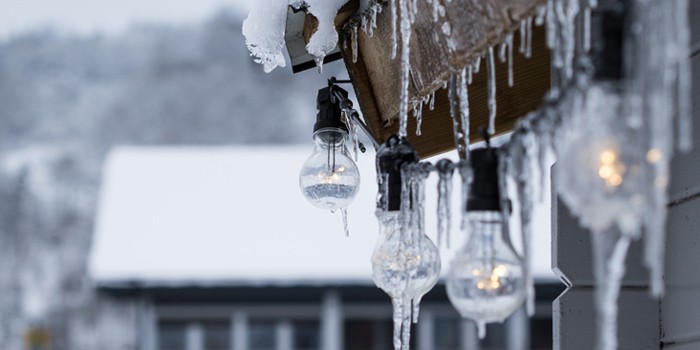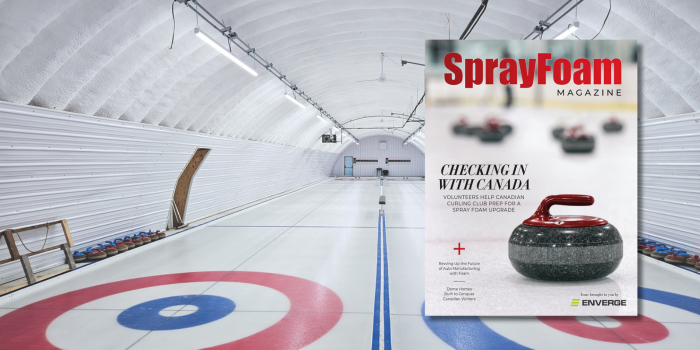8 Signs You May Be Living In An Ice Castle This Winter

Winter is here—a little earlier than usual for some of us—and you might already feel the chill in your own home. If it’s your first winter in a new place, you’ll be experiencing how your home adjusts to colder temperatures for the first time. If you’ve lived with drafts for a while, it might be time to tackle the issue head-on. Pay attention to these typical signs that your home is poorly insulated and find out what to do about it as the thermometer starts its annual plunge.
High Energy Bills
This is a good indicator of your energy use (or misuse), but first, you have to have a point of comparison. One way is to check your home’s energy bill history. Many energy providers have dashboards that allow you to track your energy consumption over time and compare it to previous seasons. Another big motivator is comparing your energy use to your neighbours who live in similar homes. A behavioural science study showed that nothing motivates homeowners to use less energy than knowing what their neighbours are doing to lower their energy costs.
Fluctuating Temperatures
Your home should have even temperatures as you move through it, from room to room. If different rooms have starkly different temperatures, that’s a clear sign your home is poorly insulated. Your HVAC system with its return vents and ducts are a big part of enabling an even and comfortable environment, but insulation is also important because without it that expensive conditioned air will leak out of your home like it was never even there to begin with.
Chilly Drafts
During the winter months, drafts in certain areas of a home are caused by cool air entering around window frames and doorways. Windows are a source of 25 per cent of a home’s heat loss. Adding insulation will not only make your home feel less drafty, but it will also save money on energy bills. Spray foam insulation is the best choice for sealing and insulating cracks and crevices.
Frozen Pipes
Frozen pipes in your walls are also huge indicators that you have an insulation problem. Proper insulation protects your home from damage caused by our freezing temperatures. Poorly insulated exterior walls can cause frozen pipes, which can burst and cause thousands of dollars worth of damage.
It Failed The Touch Test
The walls, floors and ceilings of your home should feel warm and dry to the touch. When drywall and panelling inside a home feels damp or cold, that’s a clear sign there’s not enough insulation. Alternatively, when touching an exterior wall, it should feel cold because insulation is keeping warm air inside a home. A home can lose 35 per cent of its heat through the walls, so consider adding spray foam insulation to seamlessly seal walls right into the corners.
Cold Rooms
Are some of your rooms inexplicably colder or hotter than others no matter what you do? If those rooms are well ventilated, then the problem is probably poor insulation. Heat and cool air can escape almost anywhere that doesn’t have insulation to stop its path. These rooms are often above the garage or below the attic where it can pay to add insulation. Get an expert to help you with a spray foam insulation audit.
Water Leaks In The Attic
Water has a much easier time finding its way into a poorly-insulated home than a well-insulated one. If you’re experiencing a leaky attic, your insulation may be part of the problem. Water leaks around windows can also be a sign of poor insulation. Water damage can cause many costly problems down the road, including mould issues, so give leaks prompt attention.
Ice Dams On Your Roof
A sign of poor insulation in the depths of a cold winter are ice dams. Ice dams are a direct result of heat rising from your poorly-insulated home that melts the bottom layer of snow on your roof. The meltwater then trickles down towards your gutters and once it hits the colder air may begin to freeze. This can cause large chunks of ice and oversized icicles to form on the perimeter of your roof, called ice damming. Not only does it wreak havoc with your gutters and roof, but it also becomes a safety hazard for anything or anybody below—these icicles can grow to monumental sizes.
Get An Inspection
The easiest way to tell if your house is well insulated is to have an experienced insulation expert out to inspect your floors, ceilings, and walls. Many insulation installers have access to specialized inspection equipment and some are happy to offer a free in-home inspection. Spray foam insulation is one of the best ways to save money on energy bills, since it is easy to install in an existing building and keeps a home warm in the winter and cool in the summer. Roughly 25 per cent of a home’s heat seeps out through the attic and roof, and another 35 per cent goes out the window. It’s definitely worth checking insulation levels to put some of those savings back in your wallet.
Disqus website name not provided.









































